What Is the 16:9 Aspect Ratio? Definition and Examples
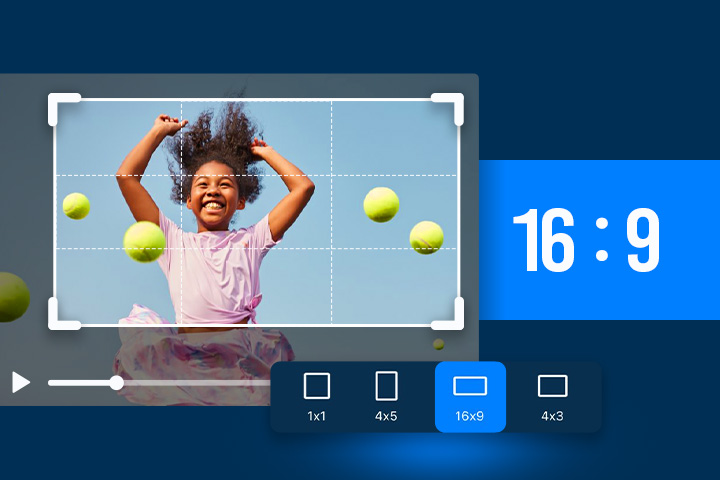
Have you ever wondered why most screens today—from TVs to smartphones—have that familiar rectangular shape? It all comes down to the 16:9 aspect ratio. Also known as widescreen, this format has become the industry standard, delivering a wider and more immersive viewing experience. In this article, we’ll break down everything you need to know about the 16:9 aspect ratio, from its origins to its impact on how we watch and create content.
Download PowerDirector now to start producing stunning videos in the 16:9 format!
- Definition: What Is the 16:9 Aspect Ratio?
- A Brief History of the 16:9 Aspect Ratio
- Free 16:9 Aspect Ratio Calculator
- How to Convert Any Video to 16:9 Aspect Ratio
- Best Software to Change Video Aspect Ratio to 16:9
- Conclusion
- FAQs About the 16:9 Video Format
Definition: What Is the 16:9 Aspect Ratio?

The 16:9 aspect ratio describes a screen format where the width is 16 units and the height is 9 units—roughly equivalent to 1.78:1. Also known as the widescreen format, 16:9 is now the standard aspect ratio for HDTVs, laptops, smartphones, and most online videos.
This format offers a wider and more immersive viewing experience, matching the natural human field of vision. Whether you're watching YouTube, streaming movies, or editing videos, the 16:9 aspect ratio ensures your content looks modern and cinematic across all major platforms.
Features of the 16:9 aspect ratio
- Optimized for the Human Visual Field
- The "Goldilocks Zone" of Aspect Ratios
- Catalyst for HD Adoption
- Greater Creative Freedom
- Streamlined Production & Distribution
- Scalable and Future-Proof
The human eye sees more horizontally than vertically. The 16:9 aspect ratio aligns with this natural field of view better than older 4:3 formats, offering a more immersive and comfortable viewing experience with less horizontal eye movement.
16:9 strikes the perfect balance between traditional 4:3 and ultra-wide cinematic formats like 2.35:1. It offers enough width for a cinematic feel while still accommodating legacy 4:3 and wider content with minimal letterboxing or cropping—making it the ideal format during the HD transition.
16:9 wasn't just used for HD—it helped define it. Its widescreen presentation made High Definition visually distinct from Standard Definition, reinforcing the value of upgrading to HD resolutions like 720p and 1080p.
More canvas, more creativity. For anyone creating video, 16:9 offers more horizontal space for framing. It supports wide landscape shots, multi-character staging, and dynamic visual storytelling.
As the global standard for TV, video, and streaming platforms, 16:9 simplifies production. Creators can work in a single aspect ratio from shooting to distribution—eliminating the need for cropping, reformatting, or black bars across platforms.
16:9 has scaled effortlessly with advancements in display technology—from 720p to 1080p to 4K and beyond. Its consistent aspect ratio ensures content remains compatible and visually consistent across evolving screen resolutions.
A Brief History of the 16:9 Aspect Ratio
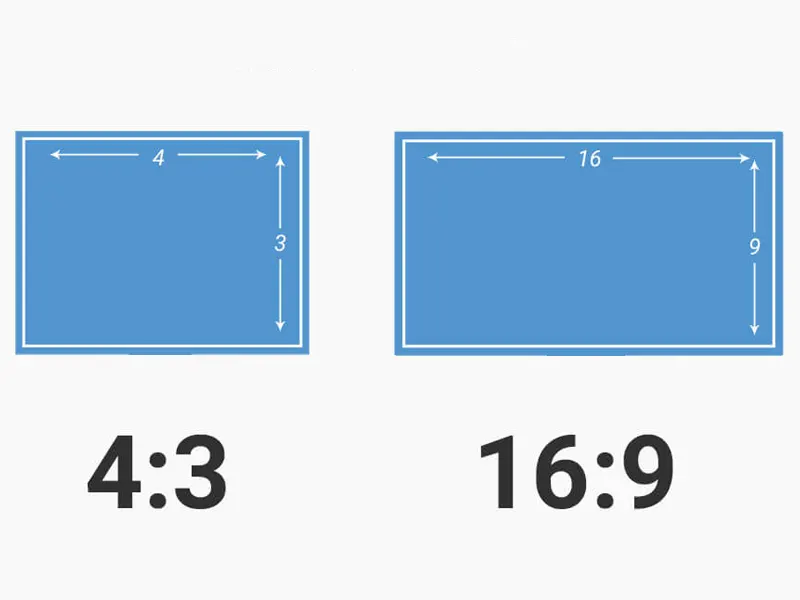
The 16:9 aspect ratio (1.78:1) is the standard for modern screens, but it wasn’t always the norm.
In the early days of film and television, the 4:3 ratio (1.33:1) was widely used, closely matching the shape of older screens. With the introduction of sound, it slightly shifted to 1.37:1 to include space for the audio track on film.
During the 1950s, movie studios introduced widescreen formats like CinemaScope (2.35:1) to create a more immersive experience and differentiate cinema from television. These formats wowed theater audiences but were less practical for home viewing.
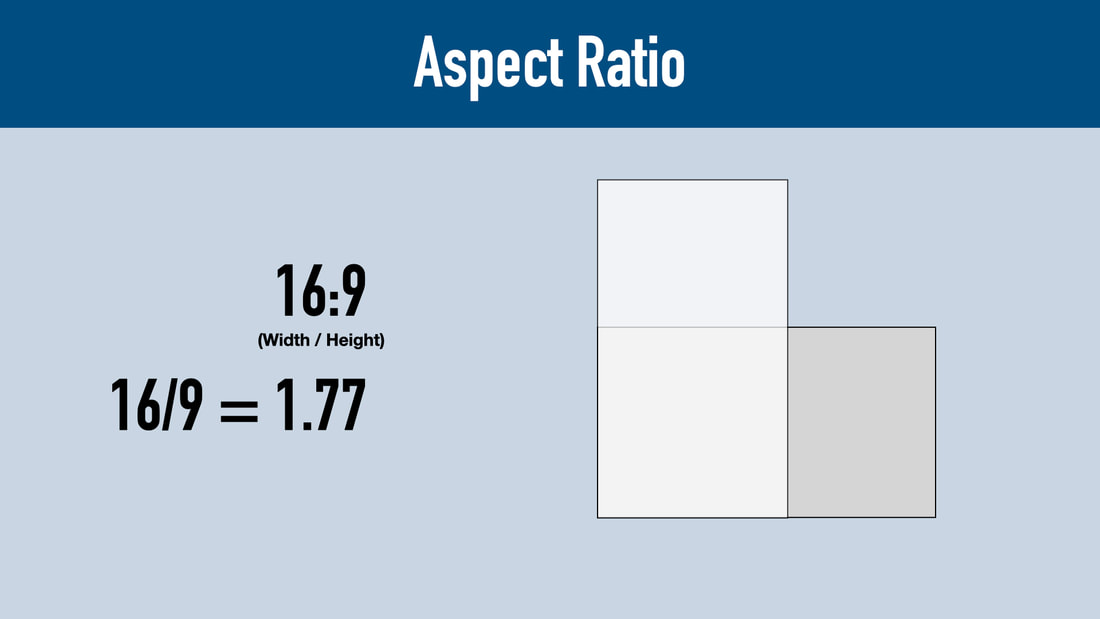
As high-definition TVs emerged, the need for a unified standard grew. The 16:9 format was adopted because it struck a balance—wide enough to suit films while still ideal for TV and digital content. Today, it’s the go-to ratio for everything from YouTube videos to smartphones and streaming platforms.
Free 16:9 Aspect Ratio Calculator
The 16:9 aspect ratio is used across a wide range of display resolutions, from HD to 8K. Here's a quick reference chart of the most common 16:9 resolutions. If you're working with custom dimensions, you can also use the calculator below to find the correct width or height while maintaining the 16:9 ratio.
| Resolution | Common Name |
|---|---|
| 640×360 | nHD |
| 1280×720 | HD or 720p |
| 1366×768 | WXGA |
| 1600×900 | HD+ |
| 1920×1080 | Full HD or 1080p |
| 2560×1440 | QHD or 1440p |
| 3840×2160 | 4K UHD or 2160p |
| 7680×4320 | 8K UHD or 4320p |
| 15360x8640 | 16K UHD |
These resolutions are commonly used across smartphones, TVs, monitors, and video content. Understanding them helps when exporting or editing videos, especially if you want to maintain a professional widescreen format.
How to Convert Any Video to 16:9 Aspect Ratio
Now that you’re familiar with the concept, history, and common resolutions of the 16:9 aspect ratio, let’s put that knowledge into action. In the next section, I’ll show you how to convert or create a video in 16:9 format using PowerDirector—a powerful video editing tool packed with user-friendly features and AI-powered tools.
Two Easy Ways to Convert Your Video to 16:9 in PowerDirector
The default aspect ratio in PowerDirector is 16:9, which is ideal for most platforms like YouTube, social media, and widescreen displays. However, if your video footage was recorded in a different format (such as 4:3 or 1:1), it’s simple to convert it to 16:9 for a more modern, cinematic look.
- Use the aspect ratio button located beneath the video preview window.
- Go to Edit > Aspect Ratio and select 16:9 from the list of formats.
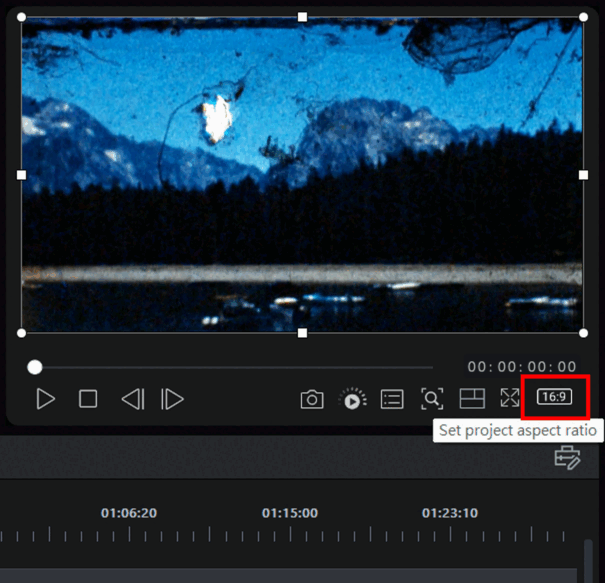

Pro Tip
By default, PowerDirector expands the canvas to preserve your original video content, which may result in black bars (letterboxing or pillarboxing) on the sides. If you want your video to fully fill the screen without any black space, simply drag and resize the video to fit the 16:9 frame. You can then reposition the visible area to highlight your preferred portion of the footage.
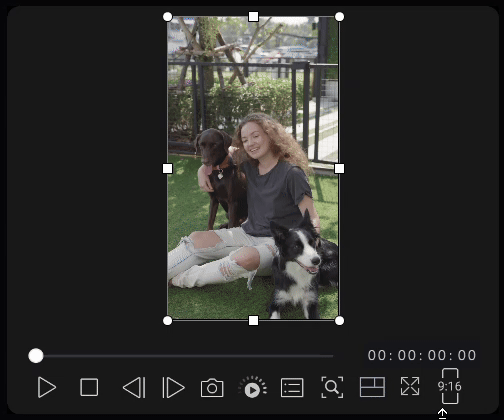
This gives you full control over the final composition while ensuring your video fits perfectly in a 16:9 widescreen format.
Best Software to Change Video Aspect Ratio to 16:9
If you're looking for a quick and effective way to convert videos to the 16:9 aspect ratio, PowerDirector is a great choice. This powerful video editing software combines advanced features with an intuitive interface, making it perfect for both beginners and experienced editors. With PowerDirector, you can easily adjust the aspect ratio to 16:9—either when starting a project or mid-edit—ensuring your video fits any widescreen device, from smartphones to 4K TVs.
Start editing in 16:9 with PowerDirector today!
Conclusion
The 16:9 aspect ratio has truly become the gold standard in video. This ubiquitous 16:9 format ensures immersive viewing across all modern screens, from TVs to phones. Embracing this versatile 16:9 ratio remains essential for creators to deliver universally compatible and impactful content. No need to worry if your footage wasn't originally filmed in this proportion; you can always use a powerful video editor like PowerDirector to effortlessly convert your video to the 16:9 aspect ratio, ensuring it looks perfect on any modern display.
FAQs About the 16:9 Video Format
The 16:9 aspect ratio refers to the proportional relationship between width and height—not a specific resolution. Common 16:9 resolutions include:
- 1280×720 (HD)
- 1920×1080 (Full HD)
- 2560×1440 (QHD)
- 3840×2160 (4K UHD)
Yes, 1920x1080 is one of the most common resolutions that use the 16:9 aspect ratio. This format, also known as Full HD or 1080p, means the screen is 16 units wide for every 9 units tall.
No, 4:3 and 16:9 are different aspect ratios. 4:3 was the standard for older TVs and videos, offering a more square-like display. 16:9 is wider and is now the global standard for modern TVs, monitors, and online video content due to its cinematic and immersive format.
You can easily convert your video to a 16:9 aspect ratio using PowerDirector. Here's how:
- Import your video into PowerDirector.
- Set your project aspect ratio to 16:9 with the Edit options, or click the aspect ratio button under the preview window.
- If your original footage has a different ratio, you can resize and crop the video to fit the 16:9 frame without black bars.
- Export your video in 16:9 format, ready for sharing on YouTube or widescreen devices.
PowerDirector also supports batch processing, AI-enhanced editing, and more, making it a powerful tool for fast and professional aspect ratio conversion.
The resolution 3440x1440 uses a 21:9 aspect ratio, also known as ultrawide. This format is wider than 16:9 and is commonly found in high-end monitors, particularly for gaming, video editing, and multitasking setups.
The 16:9 ratio means that for every 16 units of width, there are 9 units of height. This is approximately equal to 1.78:1. It’s the industry standard for modern screens, including TVs, smartphones, and video content platforms like YouTube.
2560x1080 is an ultrawide 21:9 aspect ratio, often found in cinematic displays and ultrawide monitors. It's ideal for immersive viewing, multitasking, and certain gaming setups.
Yes, 1280x720 is a 16:9 aspect ratio, commonly known as HD or 720p. It’s widely used for online videos, streaming platforms, and entry-level HD content.





